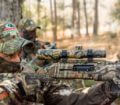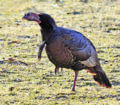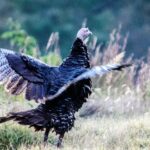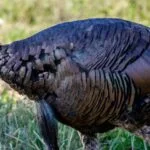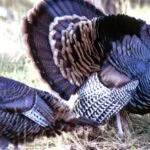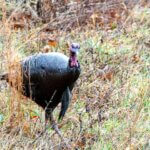John’s Note: Walter Parrott, of Farmington, Missouri, has won five World Turkey Championships with his Knight and Hale calls (http://www.knightandhale.com/) and so many state, national and regional championships that he can’t count them. He’s also starred in many outdoor videos. Here’s his best secrets for getting his tom.
I’ve learned through the years that a gobbler is more likely to come to two or more hens than he will to one. So, when I try to call in a gobbler, I always use a double-sided box call and a cutter diaphragm call. By the amount of pressure I put on each of the calls and by using both sides of the box call, I either can sound like two turkeys or a flock of turkeys. Anytime you can use more than one call to call in a gobbler, you drastically increase your odds for taking a bird.
This tactic is especially effective when hunting the wide-open spaces of the West. A Big Sky gobbler may not come to a lonesome hen, but often he’ll pack-up and move if he hears a flock of hens off in the distance. Both of these calls also work well for calling long distances.
Change Locations:
A gobbler you’ve called in that leaves for some reason is one of the toughest turkeys to kill. You’ll have to circle around, get in front of him and call him again. When I set up to call a tom the second time, I’ll use a slate call. I’ll either make my cutter sound a little higher, lower and raspier or change calls, so I sound like two new hens. I’ll also call much softer and less often than I do initially when the turkey leaves me. I want him to think he’s just stumbled on two or three new hens he has the opportunity to go visit.
 Hunt Turkeys in the Right Places at the Best Times:
Hunt Turkeys in the Right Places at the Best Times:
To take a gobbler and for your calls to work effectively, you need to hunt the right places at the best times. If you know where a gobbler plans to go, get to that spot before he does. Do just a little calling. Then you’ll be a world-champion turkey hunter when that gobbler comes straight to you. If you hunt in the West, you can use a spotting scope or binoculars to observe turkeys from long distances. By glassing gobblers before you go to gobblers to call them, you’ll get more gobblers.
 To learn more about turkey hunting, check out John E. Phillips’ print, Audible, Kindle and Nook turkey books at https://johninthewild.com/books/#turkey and at www.barnesandnoble.com. You also can download a free Kindle app that enables you to read the book on your iPad, computer or SmartPhone.
To learn more about turkey hunting, check out John E. Phillips’ print, Audible, Kindle and Nook turkey books at https://johninthewild.com/books/#turkey and at www.barnesandnoble.com. You also can download a free Kindle app that enables you to read the book on your iPad, computer or SmartPhone.
You can learn more about calling turkeys by going to johninthewild.com/audio-files/ for audio tapes to purchase audio turkey tapes of Lovett Williams, Rob Keck and Chris Kirby, available for download to your SmartPhone, tablet or computer.
For a free copy of John E. Phillips’ “The Turkey Gobbler Getter Manual,” go to https://johninthewild.com/free-books/ to download.

